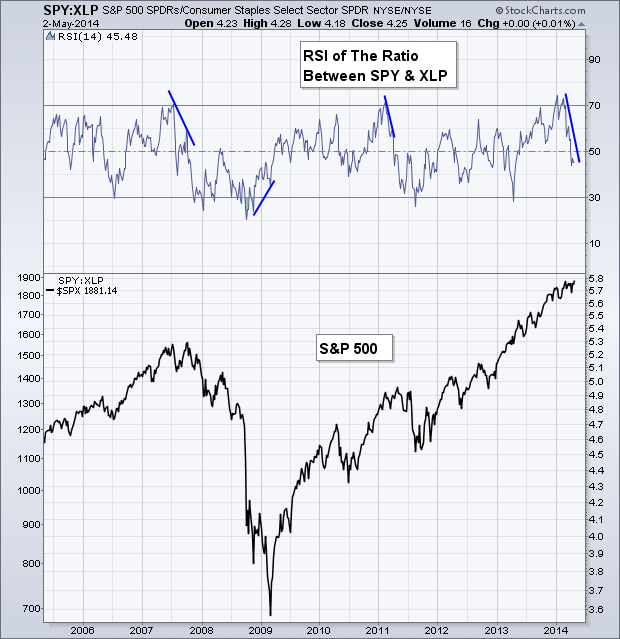By watching the relationships of certain sectors and how they perform relative to the market we are able to get a better understanding of the risk appetite for the market. I often write about these types of relationships and ratios, often looking to momentum to get a clue into potential trend changes in relative performance. There is one relationship’s momentum that I believe provides key insight into the health of the trend for the equity market, and has signaled previous turning points at key levels over years.
In March I wrote a post called Are Consumer Staples Preparing to Warn Us Of Trouble Ahead? And I took a look at the Relative Strength Index for the ratio between the S&P 500 (SPY) and the Consumer Staples Sector (XLP). I go into more detail about this relationship and its historical implications on the weekly chart for the equity market in the post. But what I highlighted was that when a divergence has developed from the RSI indicator for the ratio between these two ETFs its led to protracted down periods in the market. In March we began seeing the first step in the divergence, the momentum indicator breaking into ‘overbought’ status. Now, we have more data and the divergence has in fact been created as the chart below shows.

While the S&P 500 (SPX) has been trying to set a new high and has now tested it’s most recent weekly closing high, the RSI indicator for SPY:XLP has fallen fairly rapidly. We barely saw any form of lower highs as momentum cut right through the mid-point of its scale. The last two times we saw this occur was in 2011 before the near-bear market and in 2007 before the financial crisis. This type of divergence was also seen in 2000 and 2004.
This does not bode well for equity bulls and is something we cannot simply ignore.
Disclaimer: The information contained in this article should not be construed as investment advice, research, or an offer to buy or sell securities. Everything written here is meant for educational and entertainment purposes only. I or my affiliates may hold positions in securities mentioned.




